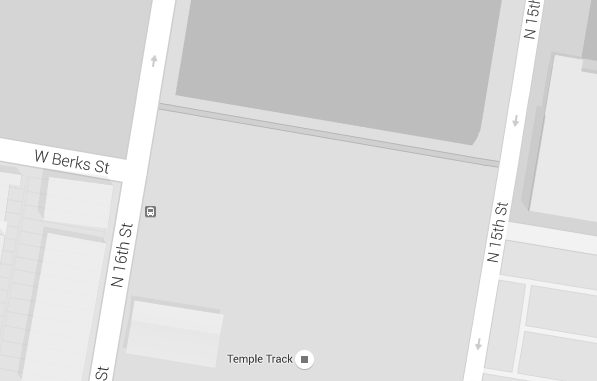
As Temple administration and the university’s Board of Trustees continue the process of deciding whether an on-campus stadium should be built, one aspect of its possible construction will be city zoning laws.
According to a city-generated map, Main Campus—including Geasey Field, the proposed site for the stadium—is designated as SP-INS, or Special Purpose-Institutional District.
SP-INS is also the designated zoning code for Drexel and the University of Pennsylvania, and parts of La Salle. According to the city’s Zoning Guide—updated in April 2013—a SP-INS district is usually assigned to large institutions, which vary from universities to colleges to medical campuses.
Tom McCreesh, director of regulatory compliance and special projects at Temple, said the university has had this type of district in place since the 1960s, when it was called an institutional development district. The new code adopted in 2013, however, did result in some changes, he added.
“The previous code did not take into account ‘buffer zones’ with residential districts,” he said. “It’s making you work and take their living spaces into account.”
McCreesh said an example of this is building a 30-foot wall in the district next to a rowhouse, which is “just not right.”
Another key aspect of the code is that it requires the special approval of a master plan from City Council. In Temple’s case, Visualize Temple was introduced in October 2014. Along with the proposed stadium, other major projects in the plan include a large central quad and new $190 million library.
Judith Robinson, a committee member of the city’s 32nd political ward—an area which includes Geasey Field, the proposed site—said the new code from 2013 coincided with the creation of the ward’s Residential Community Organization.
Initially, she disliked the SP-INS district.
“When they first created it, I thought it was going to be bad and they were going to take away my voice,” she said.
Robinson added, however, that once she learned how the new laws required more feedback from residents, she understood why the codes were changed.
McCreesh said the city’s zoning laws are meant to involve every party that would be affected by new construction.
“Zoning is working with all of the university constituents and [surrounding] neighborhoods,” he said. “That takes everyone into account, so that at least everyone understands and is on the same page.”
Along with the proposed stadium, President Theobald previously told The Temple News university officials are looking into possible retail space near the stadium, which would include “smaller stores” like coffee shops, restaurants and clothing stores.
According to current city laws, the SP-INS district allows for multiple types of retail stores. The only ones not permitted are drug paraphernalia stores and gun shops. Another restriction on the district is that buildings can only take up to 70 percent of the district’s total area, excluding streets.
Joyce Wilkerson, senior adviser to the president for Community Relations and Development, previously told The Temple News that for anything to be built on campus, a lengthy process with many sectors of city government is required.
“The city zoning process requires resident feedback, because it requires something from the City Planning [Commission],” she said. “There’s even more feedback opportunities [with] legislation, there will be public hearings down in City Council, it will require an ordinance. … It’s a very protracted process that is infused with lots of input from a whole lot of people.”
Steve Bohnel can be reached at steve.bohnel@temple.edu or Twitter @Steve_Bohnel.


Be the first to comment